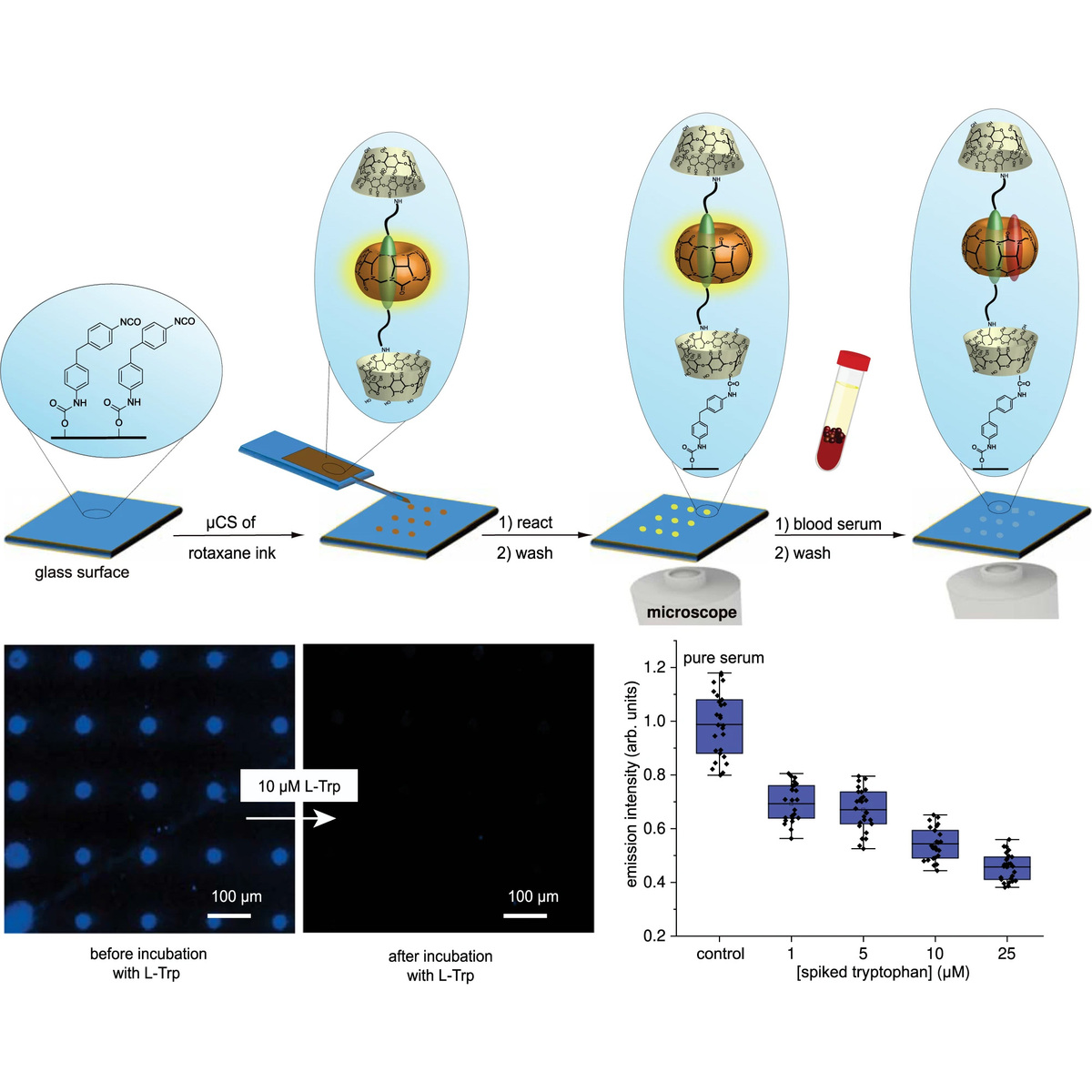
A supramolecular cucurbit[8]uril-based rotaxane chemosensor for the optical tryptophan detection in human serum and urine
-
Author:
J. Krämer, L. M. Grimm, C. Zhong, M. Hirtz, F. Biedermann
-
Source:
Nat. Commun. 14 (2023) 518
- Date: 2023
-
Sensing small biomolecules in biofluids remains challenging for many optical chemosensors based on supramolecular host-guest interactions due to adverse interplays with salts, proteins, and other biofluid components. Instead of following the established strategy of developing alternative synthetic binders with improved affinities and selectivity, we report a molecular engineering approach that addresses this biofluid challenge. Here we introduce a cucurbit[8]uril-based rotaxane chemosensor feasible for sensing the health-relevant biomarker tryptophan at physiologically relevant concentrations, even in protein- and lipid-containing human blood serum and urine. Moreover, this chemosensor enables emission-based high-throughput screening in a microwell plate format and can be used for label-free enzymatic reaction monitoring and chirality sensing. Printed sensor chips with surface-immobilized rotaxane-microarrays are used for fluorescence microscopy imaging of tryptophan. Our system overcomes the limitations of current supramolecular host-guest chemosensors and will foster future applications of supramolecular sensors for molecular diagnostics.
